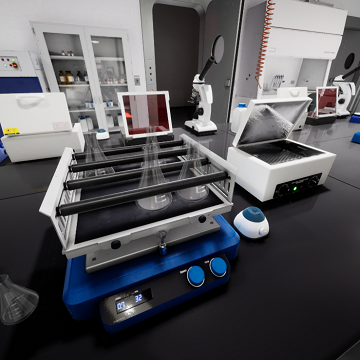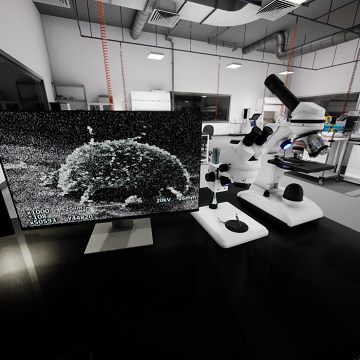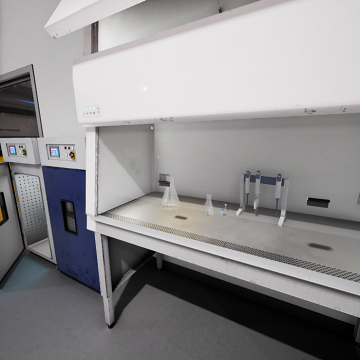Virtual Biology Labs
Incredible flexibility for Virtual Biology Labs
Effective learning occurs when a student can relate their learning to daily experiences
they have. The main aim of laboratories in science lectures is to accomplish that. Therefore,
face-to-face laboratories have been a critical asset of science lectures for decades. Nevertheless,
technological advances have had an exponential growth, and because of such growth, what is known as
“Education 4.0” has arisen in the last years. And with it, virtual and augmented reality laboratories
have taken part in the education of the twenty-first century.
As stated before, science lectures required face-to-face laboratories to have an effective impact on the
students. The practical component of such lectures is necessary in most to all cases. Nevertheless,
having such labs require a great initial investment, maintenance, and they normally come with dangers to
the students and professors. Most of these negative characteristics of a lab can be mitigated via a virtual
environment either by virtual reality or augmented reality.
Such technologies in the past years were way behind what a face-to-face lab experience will have felt like.
These where, in their majority, two-dimensional and simple. Without much customization and modifications
possible. Nowadays technologies regarding virtual environments have come a long way. Such environments can
be almost identically replicated to the real world. The physics behind the movements, and bodies are in line
to the real world. Customization and modification are a common thing in virtual environments. Not to mention
that these new lab formats eliminate the negative aspects of a real lab as much as possible. Initial investment,
and maintenance, such as updates and modifications, are also required, but these are far more economical than a physical lab.
One of the most important mitigation is the dangers a science lab normally has. In this case, a biology lab can
deal with potential biological hazards, such as materials that can carry diseases or hazardous allergens which
can put the lab team and professors at risk. Not to mention that students must follow the manuals or professor
instructions rigidly. With computer simulated labs, students have the freedom of experiment, and see the different
outcomes from their inputs. Such outputs can be catastrophic in a real-world scenario, once again, all of that is
eliminated with virtual environments.
Catastrophic or negative outcomes in biology labs can go from exposure to allergens, infectious zoonotic,
to ruining bacterial cultures. The infectious zoonotic mention is, in other words, animal diseases that are
transmissible to humans, thus presenting a great risk when operating such complicated experiments.
Moreover, the biology labs can also benefit from virtual environments, at a simpler level. Take for example junior
high or high school laboratories. Due to constraints, finishing the syllabus can often present problems. Since
in a face-to-face laboratory the professors, and staff must prepare the materials needed for each experiment.
These vary each session, and normally there is not just one biology classroom. Such materials must be prepared
several times for different sessions and groups. Lectures also vary in complexity between each grade.
Therefore, a third variable is added to the complexity of preparing the labs at issue. After adding all
these up is easy to understand why not every time it is possible to finish all the experimentation planned.
Consequently, using technology to overcome these issues is perceived as a need. Since computer simulations
and virtual environments can be presented through web pages or programs which do not need previous preparation
like a traditional biology lab.
It must be said that basic level biology labs have dangers beyond not completing the syllabus of the course on time.
Accidents are also prone to happening inside these labs. Even though they are less serious and less frequent,
the possibility is always there, and augmented environment will always mitigate such possibility, as well as
the ones mentioned before.
One more advantage of these new lab formats, is the incredible flexibility they can achieve. From taking
the lecture anywhere and at any time with a pre-recorded task, to having the freedom, mentioned before, of
experimenting with different specimens and materials without the risk of a dangerous outcome.
Building and managing biology laboratories are, to say the least, a difficult task. From basic level
like junior high and high school, due to time constraints. To more specialized labs where risks are
increased exponentially. The ideal model to embrace the new technologies is a hybrid combination between
face-to-face and virtual laboratories. This will mitigate the risk of having all the students at once or
frequently using the lab facilities but will give students and professors the opportunity to make a smooth
transition into a full virtual laboratory environment.
By Oscar Eduardo García González
Contact Us














